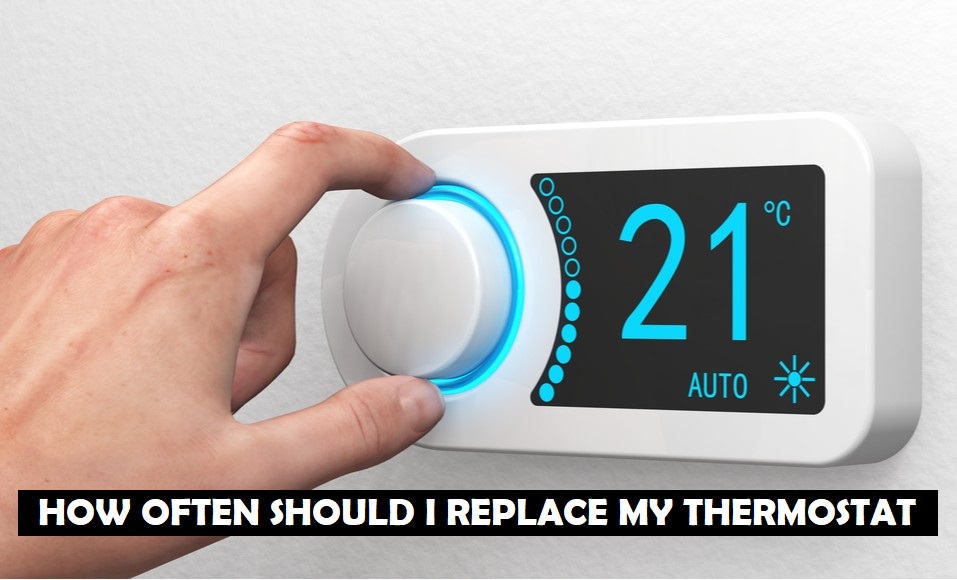In the world of HVAC (Heating, Ventilation, and Air Conditioning) systems, thermostats are often the unsung heroes that regulate indoor comfort. They play a pivotal role in determining when your heating or cooling system kicks in, ensuring that your living space stays cozy year-round. But, like all mechanical devices, thermostats have a finite lifespan, and understanding when to replace them is vital to maintaining your home’s energy efficiency and comfort. In this comprehensive guide, we’ll delve deep into the intricacies of thermostat replacement, addressing questions like “How often should I replace my thermostat?” and providing valuable insights to help you make an informed decision.

Understanding the Lifespan of a Thermostat
Thermostats, be they the classic mercury-based ones or the sleek digital models of today, aren’t built to last indefinitely. On average, a thermostat can serve you faithfully for anywhere from 10 to 20 years. However, several variables influence the longevity of your thermostat, including its type, how frequently you use it, and the level of maintenance it receives.
Types of Thermostats
- Mercury Thermostats: These older models contain a glass vial filled with mercury, which expands and contracts to regulate temperature. While they were once commonplace, their lifespan is relatively shorter, typically ranging from 10 to 15 years.
- Digital Thermostats: The modern era has introduced us to digital thermostats, including programmable and smart varieties. These advanced models tend to outlive their mercury counterparts, often enduring for 15 to 20 years or more.
Signs It’s Time for a Thermostat Replacement
Even if your thermostat is within the average lifespan range, it can exhibit warning signs indicating that a replacement is in order. Here are some of the telltale signals to watch out for:
1. Inconsistent Temperatures
If you’ve noticed that some rooms in your home are uncomfortably hot while others remain frigid, your thermostat may be the culprit. An aging thermostat can struggle to maintain a consistent temperature throughout your living space.
2. Frequent Cycling
Does your HVAC system seem to turn on and off incessantly, even when it’s not particularly hot or cold outside? This frequent cycling can not only lead to discomfort but also spike your energy bills.
3. Temperature Inaccuracy
A thermostat’s primary job is to accurately represent the temperature in your home. If you’ve compared your thermostat’s reading to a secondary thermometer and found discrepancies, it’s a clear indication that your thermostat may need recalibration or replacement.
4. Non-Responsive Controls
If you find yourself struggling with unresponsive buttons, difficulty programming your thermostat, or worse, a blank screen, your thermostat might be on its last legs.
Factors Influencing Replacement Frequency
While the age and condition of your thermostat are key factors in determining when to replace it, there are other considerations to ponder. These include technological advancements, potential energy savings, and home renovations.
1. Technological Advancements
The world of thermostat technology has evolved by leaps and bounds in recent years. Newer models offer features like energy-efficient programming, remote accessibility, and seamless integration with your smart home ecosystem. If these advancements appeal to you, upgrading your thermostat might be a wise move.
2. Energy Savings
Many of the latest thermostat models are designed with energy efficiency in mind. They can optimize your HVAC system’s performance, potentially saving you a substantial amount on your utility bills over time.
3. Home Renovations
If you’re embarking on a home renovation project or upgrading your HVAC system, it’s an opportune time to consider installing a new thermostat. A modern thermostat can complement your upgraded heating and cooling setup, ensuring optimal performance and energy efficiency.
DIY vs. Professional Installation
Once you’ve made the decision to replace your thermostat, you’ll need to consider whether to embark on a DIY installation journey or enlist the expertise of a professional technician. Both approaches have their merits and depend largely on your comfort level with electrical work and the complexity of your HVAC system.
DIY Installation
If you possess some degree of technical proficiency and have experience with electrical systems, you might opt for a DIY installation. Many thermostat models come with comprehensive installation instructions. However, it’s absolutely crucial to turn off the power to your HVAC system before attempting any installation to ensure safety.
Professional Installation
For those who lack confidence in their DIY skills or have intricate HVAC systems, hiring a professional technician is the safest and most reliable option. These experts can guarantee a flawless installation, accurate calibration, and peace of mind.
In conclusion, the frequency at which you should replace your thermostat hinges on a multitude of factors, including its type, age, and signs of malfunction. While the average lifespan ranges from 10 to 20 years, it’s paramount to heed the warning signs and consider the allure of technological advancements, potential energy savings, and home renovations as pivotal factors. Whether you decide to embark on a DIY installation or seek professional assistance, the importance of a well-functioning thermostat in maintaining a comfortable and energy-efficient home cannot be overstated.
Keep in mind that regular maintenance and timely thermostat replacement can safeguard your comfort and save you significant money in the long run by optimizing energy usage and ensuring an ideal indoor environment.




